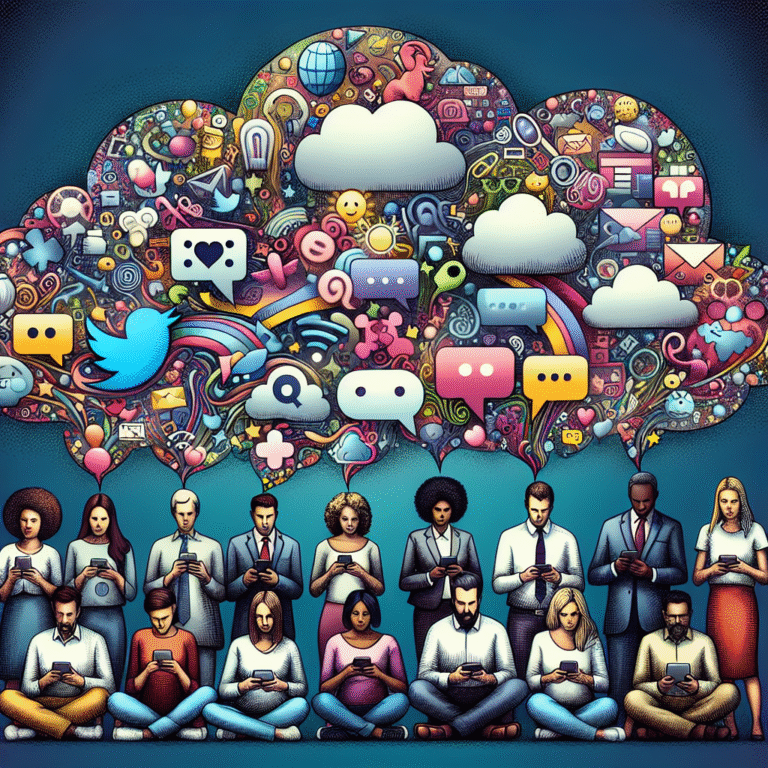
Introduction
In the rapidly evolving landscape of modern organizations, the fine line between unity and error has never been more critical. The concept of groupthink, a phenomenon where the desire for conformity within a group leads to poor decision-making, has profound implications on organizational culture. Navigating the delicate balance between unity and error is essential for fostering an environment that encourages innovation, diversity of thought, and ultimately, success.
Groupthink can lead to disastrous outcomes, as seen in historical failures like the Challenger Space Shuttle disaster and the collapse of Enron. Yet, on the flip side, a strong sense of unity is vital for collaboration and cohesiveness. This article delves into how groupthink shapes organizational culture, exploring its effects, case studies, and actionable insights for leaders looking to strike a balance.
Understanding Groupthink: The Concept and Its Roots
Defining Groupthink
Groupthink, a term coined by social psychologist Irving Janis, describes the psychological phenomenon where the desire for harmony or conformity in a group results in irrational or dysfunctional decision-making. When group members prioritize consensus over critical analysis, they often overlook alternatives and fail to consider dissenting viewpoints.
Historical Context
The concept gained traction in the 1970s, particularly after Janis’s research highlighted its role in historical events like the Bay of Pigs invasion. Understanding its roots helps organizations recognize the symptoms early and mitigate its impact.
Key Characteristics of Groupthink
- Illusion of Invulnerability: Group members tend to believe they cannot fail, leading to excessive risk-taking.
- Collective Rationalization: Dissenting opinions are often dismissed, reinforcing the group’s position.
- Belief in Inherent Group Morality: Members may ignore ethical or moral consequences of their decisions.
- Stereotyping Outsiders: Viewpoints from outside the group are often seen as inferior or irrelevant.
These characteristics contribute to a culture that favors conformity, often at the expense of innovation and critical thinking.
The Double-Edged Sword: Unity
The Importance of Unity in Organizations
Unity in an organization fosters collaboration, improves morale, and creates a sense of belonging among employees. It encourages team members to work toward common goals and reinforces loyalty. However, when unity morphs into groupthink, it can become detrimental.
Case Study: Xerox and the Rise of Innovation
In the 1970s, Xerox faced fierce competition in the tech industry. The company’s Research & Development division became a hotbed of collaborative innovation, resulting in the invention of the graphical user interface. This unity among diverse thinkers led to a breakthrough that would redefine technology. However, as success bred complacency, the company began to experience symptoms of groupthink, hindering its ability to adapt to new market realities.
Analysis:
Xerox’s case illustrates how a culture of unity can drive innovation but also warns of the risks posed by groupthink. Leaders must cultivate an environment where diverse opinions are not just welcomed but actively sought.
Table 1: Benefits of Unity vs. Risks of Groupthink
| Aspects | Benefits of Unity | Risks of Groupthink |
|---|---|---|
| Decision-Making | Collaborative and efficient | Poor decision-making outcomes |
| Innovation | Creative synergism | Stifling of original ideas |
| Morale | High engagement and loyalty | Decreased morale and satisfaction |
The Dark Side: Groupthink
Recognizing Groupthink Symptoms
Understanding the early warning signs of groupthink is critical for leaders. Symptoms include:
- Self-censorship: Members hesitate to express their true opinions.
- Illusion of Unanimity: Silence is perceived as agreement.
- Direct Pressure on Dissenters: Members who challenge the majority are often pressured to conform.
Case Study: The Challenger Disaster
The 1986 Challenger Space Shuttle disaster is one of the most cited examples of groupthink. Engineers from NASA and Morton Thiokol raised concerns about O-ring performance in cold weather, but their warnings were dismissed. The management’s desire to maintain the launch schedule created an illusion of invulnerability and led to the tragedy.
Analysis:
This case underscores the devastating impact of groupthink. Effective decision-making must welcome dissent and actively encourage a culture of questioning assumptions.
Fostering a Culture that Strikes the Balance
Strategies to Mitigate Groupthink
1. Encourage Open Communication:
- Leaders should create an environment where team members feel safe voicing their concerns. Anonymous feedback channels can also be effective.
2. Promote Diverse Perspectives:
- Actively seek input from individuals with different backgrounds and experiences to foster innovation.
3. Implement Devil’s Advocacy:
- Assign team members to critique proposals, encouraging a healthy debate and critical examination of ideas.
4. Break Down Silos:
- Encourage cross-department collaborations that expose teams to varied viewpoints and ideas.
Table 2: Strategies for Balancing Unity and Preventing Groupthink
| Strategy | Purpose | Benefits |
|---|---|---|
| Open Communication | Encourage honesty and participation | Enhance morale and engagement |
| Diverse Perspectives | Foster creativity and innovation | Reduce likelihood of groupthink |
| Devil’s Advocacy | Challenge prevailing viewpoints | Improve decision quality |
| Cross-Department Collaborations | Broaden perspectives | Increase collaboration and synergy |
Real-World Impacts: Case Studies
Case Study: IBM’s Transformation under Lou Gerstner
When Lou Gerstner took the helm of IBM in the 1990s, he faced a company riddled with groupthink. The deeply ingrained culture hindered innovation, and the organization was losing ground in the tech market. Gerstner implemented a radical cultural shift that emphasized open communication and accountability.
Results:
Under his leadership, IBM embraced a more adaptive culture, fostering innovation and ultimately leading to a successful turnaround.
Analysis:
Gerstner’s experience showcases that recognizing and addressing groupthink can rejuvenate an organization, enabling it to thrive in competitive landscapes.
Case Study: Google’s Approach to Culture
Google is often celebrated for its innovative culture, where every employee is encouraged to contribute ideas. The company’s 20% time policy allows employees to spend part of their workweek on passion projects. This approach has resulted in groundbreaking products like Gmail and Google Maps.
Analysis:
Google’s commitment to maintaining an inclusive culture that values diverse perspectives helps minimize the risks associated with groupthink. The organization exemplifies how to harness unity without succumbing to conformity.
Conclusion: Navigating Between Unity and Error
Organizational culture is a powerful catalyst for either success or failure. Between unity and error, the delicate balance hinges on how leaders recognize and mitigate groupthink. By fostering open communication, embracing diversity, and encouraging critical thinking, organizations can cultivate a robust culture that celebrates unity without falling prey to the pitfalls of groupthink.
To thrive in today’s fast-paced environment, leaders must actively work to create a culture that allows for dissent, valuing the contributions of all team members. As you move forward in your leadership journey, consider how the lessons learned from groupthink can inform your strategies—leading not just to successful teams but also to innovative organizations that are prepared for any challenge.
FAQs
1. What is groupthink, and why is it important to address it?
Groupthink is a psychological phenomenon where the desire for harmony in a group leads to poor decision-making. Addressing it is crucial because it can result in significant errors in judgment, ultimately harming the organization.
2. How can I recognize the symptoms of groupthink in my team?
Symptoms include self-censorship, an illusion of unanimity, and direct pressure on dissenters. Observe team dynamics and communication patterns for signs of reluctance to voice differing opinions.
3. What strategies can help prevent groupthink in my organization?
To prevent groupthink, encourage open communication, promote diverse perspectives, implement devil’s advocacy, and create cross-department collaborations.
4. Are there any industries more susceptible to groupthink?
Highly hierarchical organizations or industries with significant pressure to conform, such as the military or certain corporate environments, may be more susceptible to groupthink.
5. Can groupthink have any positive aspects?
While generally detrimental, groupthink can foster unity and speed in decision-making when team members share similar views. However, it’s important to balance this with critical analysis and dissenting opinions.
By understanding the dynamics of groupthink and actively fostering a culture that embraces diversity and critical thinking, organizations can navigate the fine line between unity and error, ultimately driving innovation and success.

















